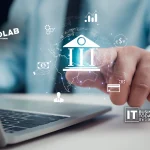2025年9月29日、トヨタ自動車といすゞ自動車は、次世代自動車の共同開発に関する画期的な提携を発表しました。 燃料電池 (FC)路線バス、ジェイ・バス宇都宮工場で2026年度生産開始予定
この協業は自動車製造にとどまりません。水素エネルギーシステムやデジタルフリートプラットフォームから、規制の枠組みや地域のイノベーション戦略まで、日本のモビリティとテクノロジーのエコシステムをより深く再構築することを示唆しています。
その主な要因は?
プラットフォーム共有:トヨタといすゞは、いすゞが開発した平床BEVプラットフォーム(日野にも採用)に、水素燃料電池システムを搭載。
コンポーネントの標準化:バッテリー電気バスと燃料電池バスの部品を統一することで、コスト削減、メンテナンスの簡素化、生産規模の拡大を実現。
政府支援によるロールアウト:経済産業省が掲げる商用FC車の重点分野に特化した戦略。地方自治体の積極的な普及を促進。
ビヨンド・ゼロ戦略:トヨタの長期ビジョンは、水素を、エネルギーの生成、輸送、貯蔵、使用にわたるカーボンニュートラルの達成の中核と位置づけています。
こちらもお読みください: トヨタが「織り都市」を発表:トヨタが「織物都市」を発表
これは、日本が水素を実験的なものとしてではなく、特に大型輸送における電化と並行した道筋として捉えていることを示す、これまでで最も明確なシグナルです。
日本の技術セクターへの影響
1.水素エコシステムの加速
燃料電池バスの開発には、車両だけでなく水素のバリューチェーン全体が必要です。日本のハイテク企業やエンジニアリング企業は、今後ますます需要が高まるでしょう:
- 水素製造技術(電解槽、改質器)。
- 高度な貯蔵・安全システム(軽量タンク、バルブ、漏洩検知センサー)。
- 給油プロセスを制御するステーションオートメーションとIoTプラットフォーム。
このため、クリーン・エネルギー分野では、伝統的なエンジニアリング大手と機敏な新興企業の両方にビジネスチャンスがあります。
2.BEV と FCEV プラットフォームの融合
バッテリーバスと水素バスでコンポーネントを共有する動きは、モジュール式車両エコシステムへの一歩です。エレクトロニクス、熱管理、ドライブトレインシステムのサプライヤーは、複数の車種にまたがって拡張できるプラグアンドプレイ・モジュールを設計できます。
技術業界にとって、このモジュール化は統合がよりシンプルになるため、参入障壁が低くなります。また、自動車メーカーがシステムの標準化を推進する中、ソフトウェア、シミュレーション、AIを活用したテストツールも普及するでしょう。
3.デジタル&データインフラの成長
水素バスは、燃料補給スケジュールや予測メンテナンスから水素ステーションの利用分析に至るまで、新たな複雑な車両管理を導入します。AI、クラウドプラットフォーム、デジタルツイン、IoT診断に特化した技術ベンダーが契約を獲得する見込み。
富士通やNECのような日本のIT企業は、モビリティSaaSの新興企業とともに、水素フリート改善を含むサービスを拡大する可能性があります。
4.地域イノベーション・テストベッド
水素バスの配備は経済産業省が指定した優先ゾーンから開始されるため、早期に水素バスを導入した都市は、地域のイノベーション・クラスターへと発展する可能性があります。つまり、地元の大学、アクセラレーター、中小企業は、水素関連技術の試験的導入において先行者利益を得ることができるのです。
これは、欧州のEVパイロット・シティが充電とスマートグリッド統合のための強力なエコシステムを構築したことを反映しており、日本も水素でこのモデルを再現することができます。
ビジネスチャンスと課題
チャンス
部品メーカー:センサー、コンプレッサー、インバーター、制御電子機器のサプライヤーは、新しいサプライチェーンの波に乗ることができます。
ソフトウェア&AI企業:車両最適化、予知保全、エネルギー効率化ソフトウェアへの需要が高まっています。
水素インフラ・プロバイダー:電解槽メーカー、タンクメーカー、ロジスティクス・オペレーターは新たなビジネスチャンスに恵まれるでしょう。
先進的な地方自治体および交通機関:早期に採用することで、補助金を獲得し、試験的資金を利用し、クリーンモビリティのリーダーになることができます。
課題
資本集約度:強力な水素インフラと燃料電池バスの構築には多額の投資が必要。中小企業が競争力を維持するためには、パートナーシップを結ぶか、補助金を得る必要があります。
規制の遵守 水素の安全基準は非常に厳しい。準備を怠ったサプライヤーは認証の遅れに直面することになります。
コンペティション: トヨタといすゞは技術革新を推進。他の自動車メーカーや世界のバスメーカーは独自の技術で対抗するでしょう。そうなれば、技術革新競争はさらにヒートアップするでしょう。
統合のリスク: エネルギー・プロバイダー、都市、自動車メーカーの間の厳しい結びつきを管理するのは難しいことです。リソースの少ない中小企業にとってはなおさらです。
世界的・長期的な影響
日本の戦略は国境を越えて重要。バッテリーの電動化と水素モビリティという2つのアプローチを追求することで、バッテリーにほぼ全面的に賭けている市場との差別化を図っています。
国際企業は日本市場にアクセスすることができます。ジョイント・ベンチャー、技術ライセンス、試験的な共同事業などを通じて。水素貯蔵、燃料電池膜、AI車両管理などに焦点を当てた企業は、新たなチャンスを見つけることができるでしょう。
日本の標準化推進が世界のモビリティ規格に影響。トヨタといすゞはBEVとFCEVの部品を揃えています。これによって世界的なコストが下がります。その結果、バスやトラックでの水素利用が加速するでしょう。
結論
燃料電池バスに関するトヨタといすゞのパートナーシップは、単なる製造契約ではありません。水素エコシステム、モジュラープラットフォーム、デジタルデータレイヤー、地域テストベッドを含む、日本のモビリティ技術スタックの戦略的再構築です。
日本のハイテク産業にとっては、水素システム、IoTプラットフォーム、AI車両管理、部品イノベーションの成長が約束されています。企業にとっては、チャンスは膨大ですが、コスト、規制、競争といった課題が伴います。
日本が「ビヨンド・ゼロ」の未来の礎として水素を位置づけているように、このコラボレーションは、日本だけでなく世界のクリーンモビリティ技術の次の10年を決定付けるかもしれません。






